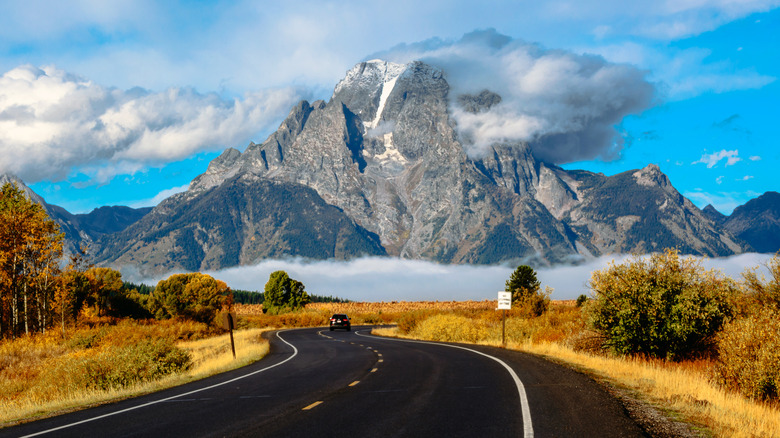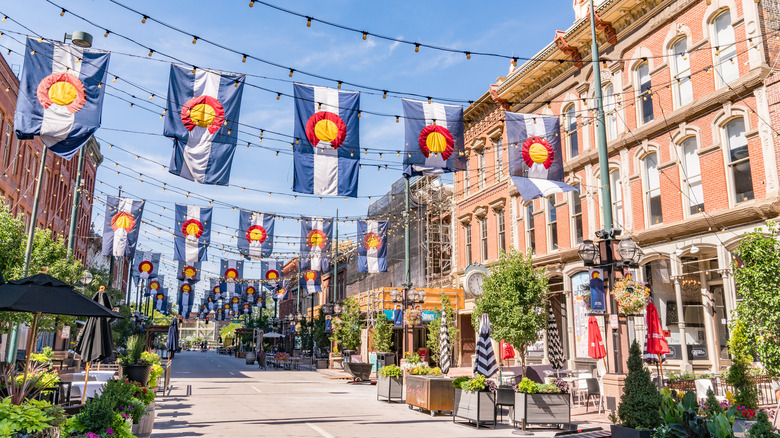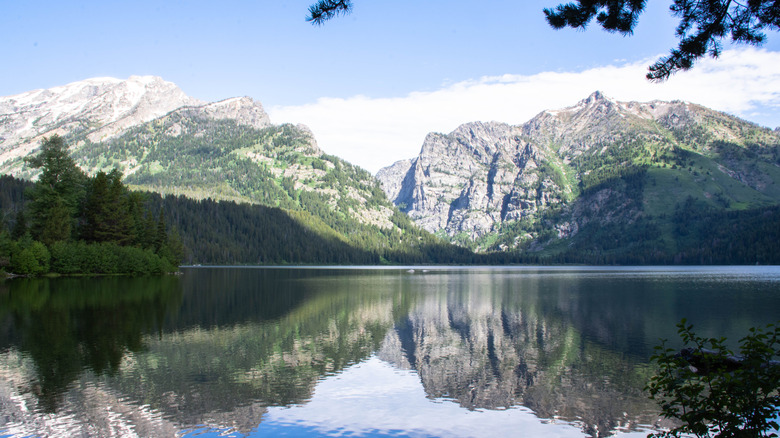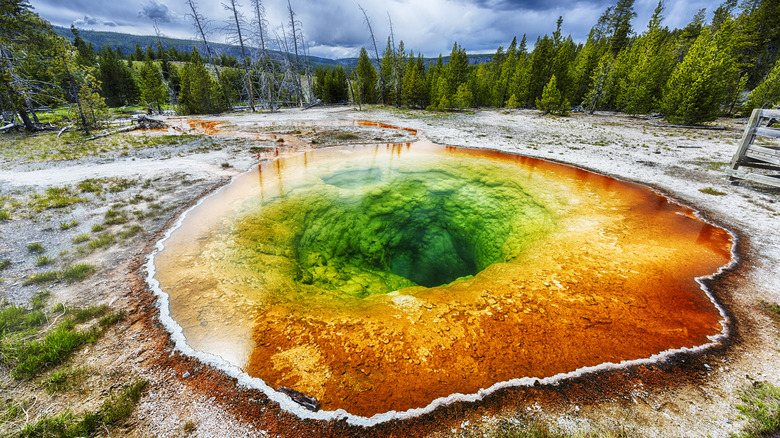This Route From Denver To Yellowstone National Park Is A Breathtaking Road Trip
With its varied landscapes, wide-open spaces, and multiple national parks, the western section of the continental United States is a haven for outdoorsy roadtrippers. Not only are iconic destinations well connected, but the drives in between them are exciting. The scenery and activities change with the seasons as well. Of course, ski resorts in these states are popular during winter, but colder months mean fewer crowds at the region's largest points of interest when it comes to less seasonal activities.
The drive from Denver to Yellowstone National Park in the northwest corner of Wyoming is a little over 600 miles, and the road trip between the two destinations features mountains, lakes, wildlife refuges, and some of the country's most unique geological formations. Taking this route, you can check three national parks off your list, and there are some entertaining sights to see in the cities along the way.
Explore Denver and Rocky Mountain National Park
The "Mile High City" features a central location that's surrounded by Colorado's iconic nature. However, the city itself should not be overlooked. Before embarking on your northwestern road trip to Yellowstone National Park, check out downtown Denver's happenings. Larimer Square is the oldest part of the city and preserves its 1800s architecture while serving as a hub for restaurants, bars, and unique shops. After exploring, kickstart your nature adventure at the Rocky Mountain Arsenal Refuge, a massive urban sanctuary that's home to bison, deer, coyotes, eagles, and prairie dogs.
A short detour from the northern trajectory of a Denver to Yellowstone road trip brings you to Rocky Mountain National Park. A convenient way to explore the park is via the shuttle buses from the Estes Park Visitor Center. Operating from May to October, these seasonal shuttles take visitors to park amenities and popular trails within the park, from riverside walks to mountain hikes. Although the shuttles don't operate in the winter, the park becomes a haven for cross-country skiers, and winter hikers can enjoy the area with the help of snowshoes.
Hike at Grand Teton National Park
Head north from Colorado to Laramie, Wyoming — a quaint town with an outlaw past. Wyoming Territorial Prison State Historic Site was first built here in 1872. Infamous outlaw Butch Cassidy once spent 18 months in this prison. He and his "Wild Bunch" accomplices robbed banks and trains all over the West, inspiring the Paul Newman film "Butch Cassidy and the Sundance Kid." The prison is no more, but visitors can check out the former cells and learn how the prisoners spent their days 150 years ago.
In northern Wyoming is Grand Teton National Park. Its imposing mountains, wildlife, and lakes make this park a highlight of the state. Head to the park's visitor center for information on its advanced and beginner hiking trails. Among the leisurely seasonal hikes is Woodland Trail Loop which leads to Phelps Lake. For a much longer and steeper hike, you could try the 20-mile Cascade Canyon Loop to Paintbrush Canyon during the summer and fall months.
Tent and RV campers have plenty of locations to set up, and there are also ranches and cabins scattered throughout. Two lodges stay open throughout the winter season. No matter where you stay, however, remember that animals like elk and endangered grizzly bears call the park home, so be sure to leave no trace.
Arrive at the world's first national park
In the early years of U.S. Westward Expansion, explorers conveyed their extraordinary findings at what would become Yellowstone National Park, but news outlets did not believe that such a place existed. Given the park's geothermal activity — geysers that shoot steam high into the sky and pools of water with vibrant colors — it is easy to see why Yellowstone needs to be seen to be believed. Luckily, you can stay at the park's onsite campgrounds and lodges to take it all in.
In 1872, Yellowstone National Park became the first official national park in the U.S. However, indigenous peoples had long been aware of Yellowstone's grandeur. As the park's management works with the tribes to better bring the region's indigenous past into the present, park visitors can learn about the tribes associated with the park at the Yellowstone Tribal Heritage Center. You can also stop by other visitor centers and museums throughout the park to learn how the unique natural landscapes of Yellowstone came to be.



